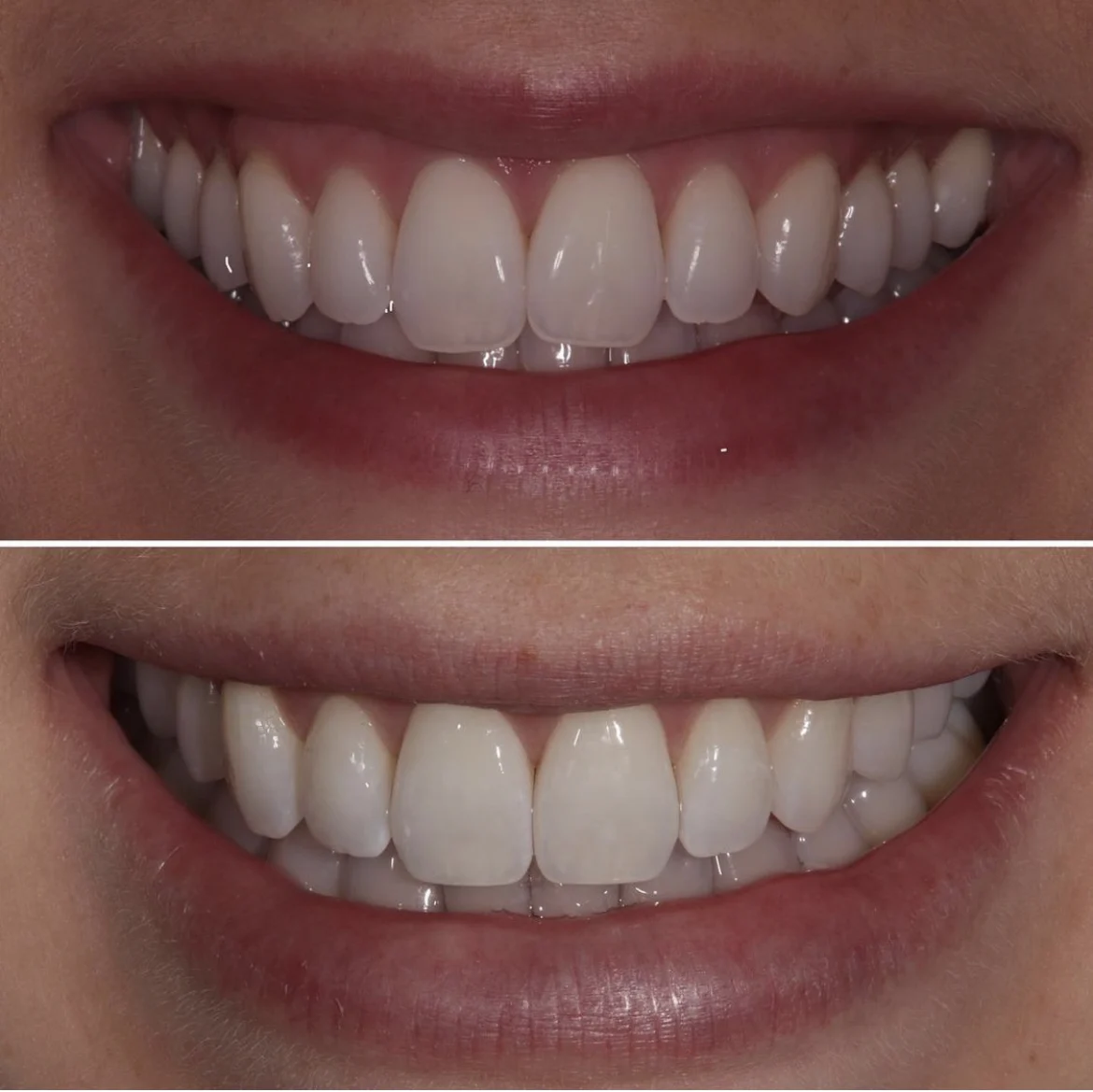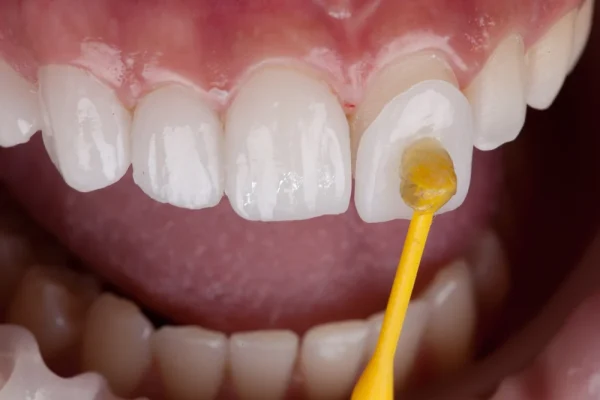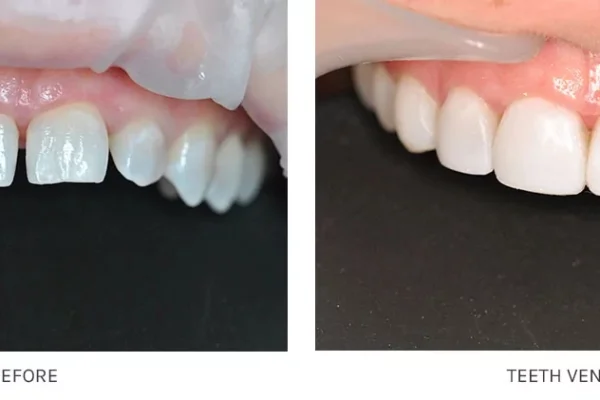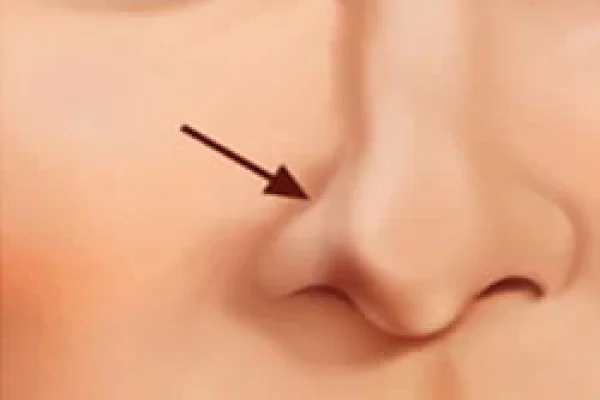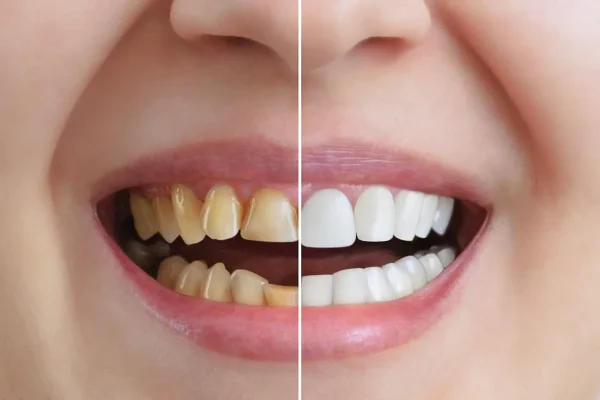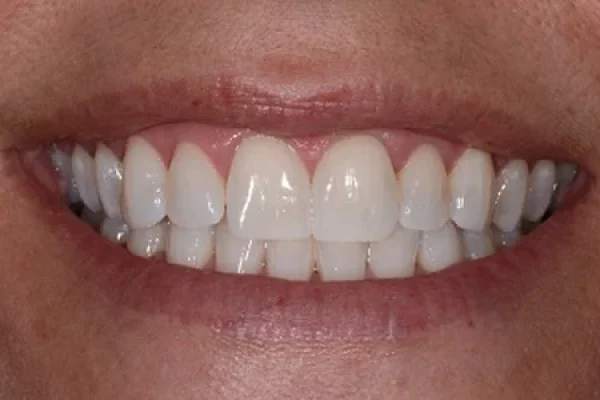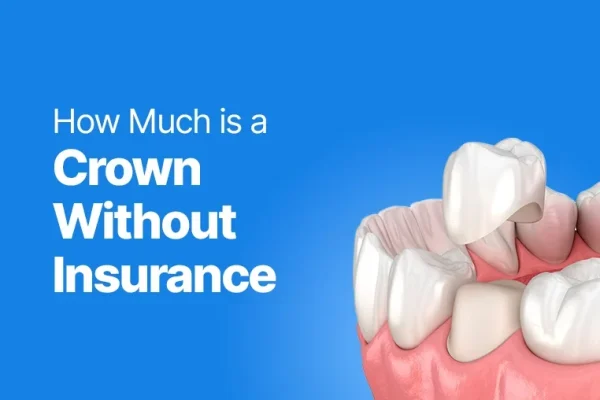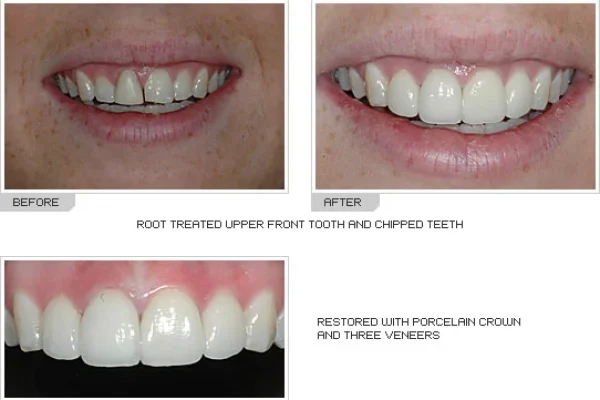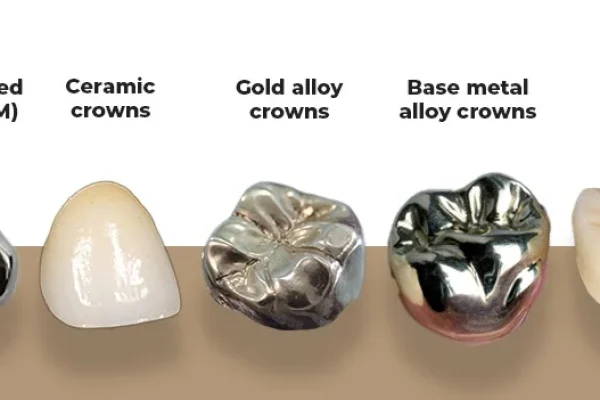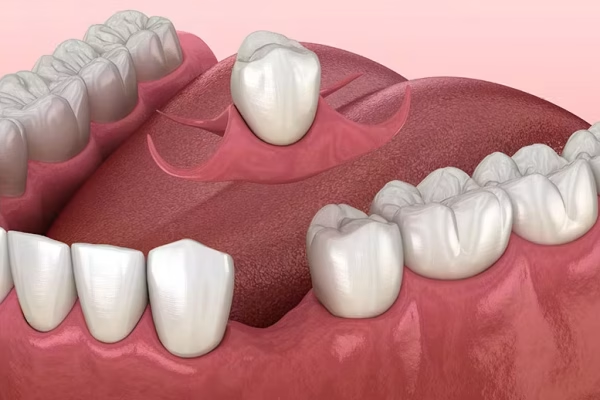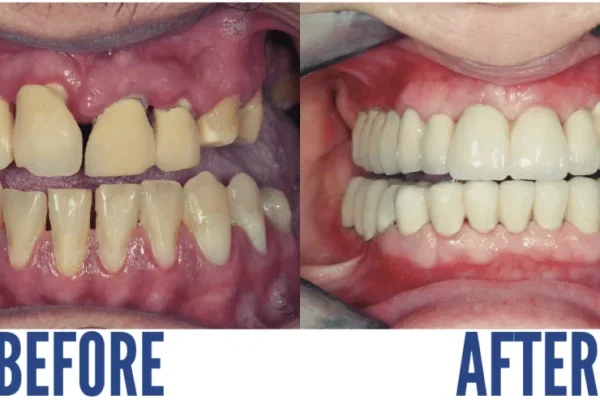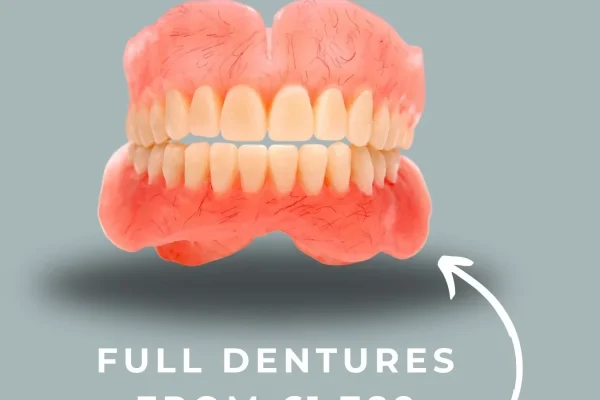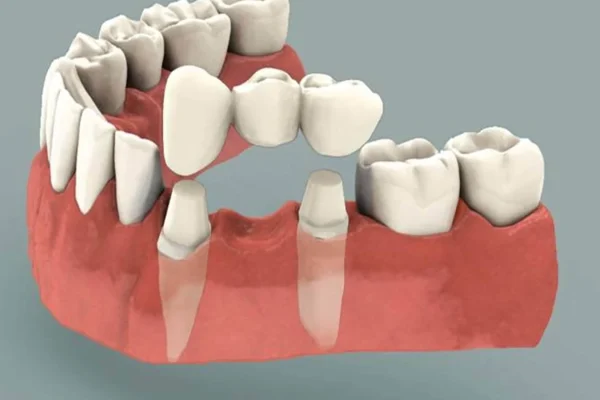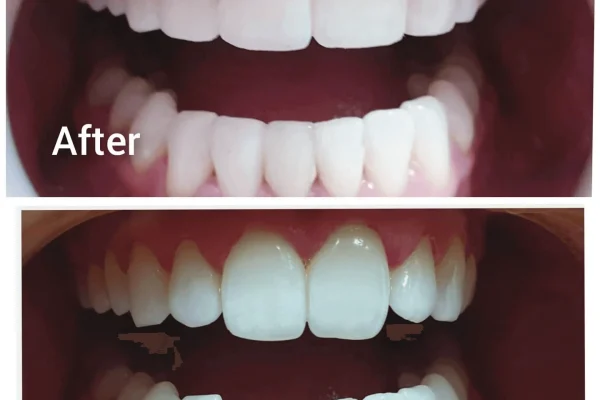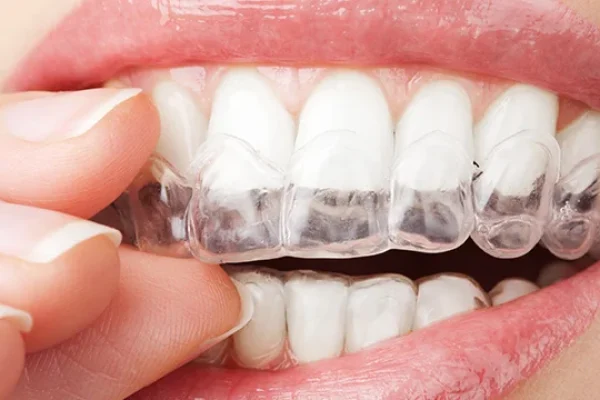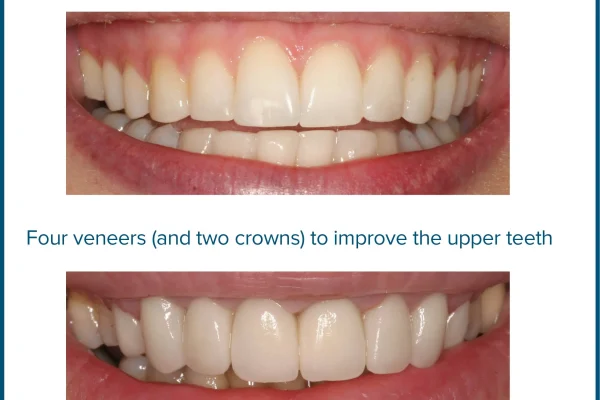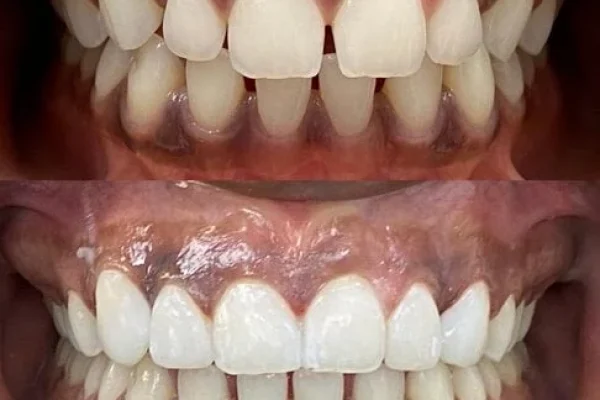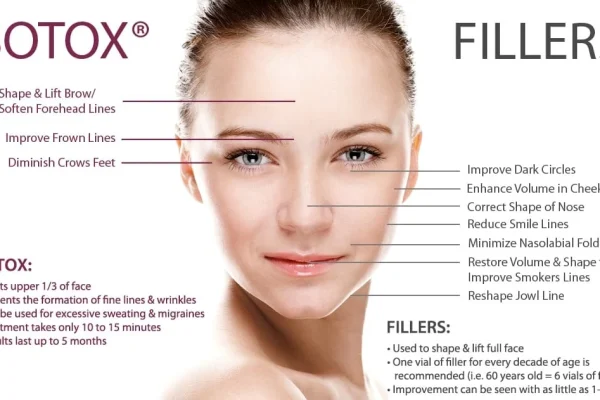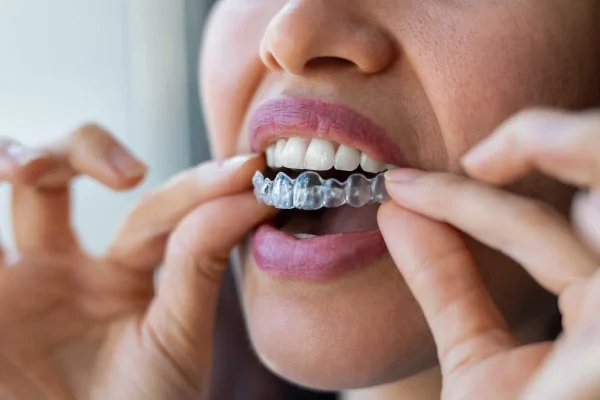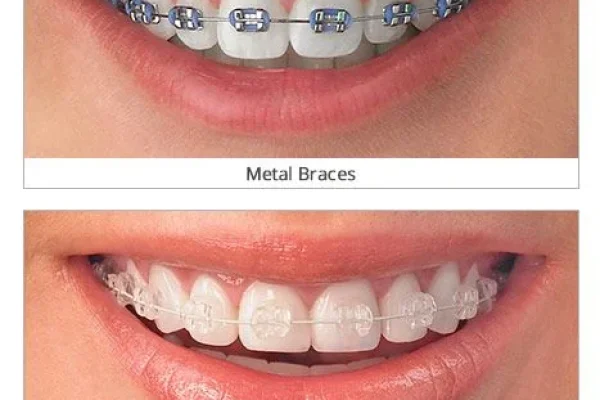
Ever found yourself scrutinising your smile in the mirror, noticing those tiny imperfections – a slightly jagged edge, one tooth a fraction longer than its neighbour, or a minor chip that catches the light just so? You’re not alone. Many of us dream of a more harmonious, symmetrical smile, but the thought of extensive dental work can be daunting. What if there was a less invasive, quicker, and often more affordable route to refining those little details? Enter the world of teeth filing. This isn’t about dramatic transformations that render you unrecognisable, but rather the art of subtle enhancement, a dental finesse that can make a remarkable difference to your overall look and confidence. This comprehensive guide will illuminate every facet of teeth filing, from understanding the fundamental procedure to navigating the costs, risks, and dazzling after-effects. We’ll explore who stands to benefit most, what the experience actually entails, and crucially, why putting down that nail file and seeking professional expertise is non-negotiable. Get ready to discover how this precise technique can sculpt your smile into its most aesthetically pleasing version, one gentle adjustment at a time, empowering you with the knowledge to decide if it’s the right step towards the brighter, more even smile you’ve always envisioned.
Table of Contents
ToggleKey Takeaways
- Professional teeth filing (enameloplasty) is a safe, minimally invasive cosmetic procedure for minor dental imperfections like small chips or uneven edges.
- Performed by a dentist, it offers immediate, permanent results and is generally painless, often not requiring anesthesia.
- DIY teeth filing is extremely dangerous and can lead to irreversible enamel damage, increased sensitivity, decay, and aesthetic problems. Always avoid it.
- The cost of professional teeth filing varies based on factors like the number of teeth, complexity, dentist’s location, and expertise.
- A thorough consultation with a qualified dental professional is crucial to determine suitability, discuss expectations, and understand risks.
What is Teeth Filing and How Does It Transform Your Smile?
Let’s cut to the chase: what exactly is this procedure that promises a smile upgrade without the drama of more complex dental interventions? At its most fundamental, teeth filing is a cosmetic dental technique designed to artfully sculpt and refine the appearance of your natural teeth. Think of your dentist as a meticulous artist, using specialised tools to make minute alterations that culminate in a significantly more harmonious and aesthetically pleasing smile. It’s a popular choice for individuals looking to correct minor imperfections that, while perhaps small, can disproportionately affect one’s self-perception and confidence. The magic of teeth filing lies in its precision and its conservative nature; it’s about enhancing, not overhauling. You might hear it called by several names in dental circles or online forums, and it’s useful to know they often refer to the same family of treatments. Tooth reshaping, dental contouring, and the more clinical term enameloplasty are all common synonyms for teeth filing, sometimes also colloquially referred to as teeth shaving. While “shaving” might sound a bit aggressive, rest assured, when performed by a professional, it’s anything but. The core principle remains the same: the careful, targeted removal of tiny amounts of tooth enamel. Enamel, if you’re not familiar, is the incredibly hard, translucent outer layer of your teeth, acting as their primary shield. During teeth filing, your dentist will gently abrade or smooth this enamel surface, allowing them to subtly alter a tooth’s overall shape, adjust its length to create better symmetry with adjacent teeth, or smooth out any minor irregularities on its surface, such as small chips or pits. Historically, the concept of altering tooth shape for aesthetic or functional reasons isn’t entirely new, but modern dental contouring origins are rooted in advancements in dental materials, tools, and a deeper understanding of dental anatomy and cosmetic principles, allowing for incredibly precise and predictable results. It’s a delicate balance of science and artistry aimed at achieving a natural, beautiful outcome.
What Exactly is Tooth Contouring or Enameloplasty?
Diving a little deeper, when your dentist talks about enameloplasty, they’re using the precise, clinical term for what is more commonly known as tooth reshaping or contouring. The suffix “-plasty” in medical terminology often refers to the surgical repair or plastic surgery of a part of the body, and in this context, enameloplasty quite literally means the reshaping of the enamel. It’s crucial to understand that this is considered one of the most conservative cosmetic dental procedures available. Its focus is squarely on making minor aesthetic adjustments, those subtle refinements that can elevate a good smile to a great one without the need for more extensive treatments like veneers or crowns, especially when the underlying tooth structure is healthy. Think of it as the dental equivalent of a bespoke tailoring adjustment; it’s not about creating a whole new garment, but rather perfecting the fit and fall of an existing one. The changes achieved through enameloplasty are, by design, subtle. This isn’t a procedure for correcting major crowding, significant bite issues, or drastically altering tooth size. Instead, it excels at addressing issues like smoothing out small chips, rounding off pointed or jagged edges that can look out of place or even feel irritating to the tongue, correcting minor overlaps where teeth just slightly crowd each other, or evening out teeth that are marginally different in length. Its application is particularly effective and common for improving the appearance of the front teeth or canines, as these are the most visible components of your smile. A slightly misshapen canine, for example, can disrupt the smooth arc of a smile, and enameloplasty can beautifully integrate it for a more flowing, attractive line. The goal is always to enhance the natural beauty of your teeth, making them appear more uniform and symmetrical, contributing to an overall more polished and confident presentation. It’s a quick, often painless way to make a noticeable, positive impact.
Which Dental Professionals Perform Teeth Filing Procedures?
When considering a procedure like teeth filing, it’s natural to wonder whose expert hands you should entrust with your smile. The good news is that teeth filing, or enameloplasty, is a procedure well within the skillset of many general dentists. Most general dental practitioners are trained in the fundamentals of cosmetic dentistry and are equipped to perform straightforward enameloplasty to correct minor aesthetic imperfections. They routinely handle procedures that involve understanding tooth anatomy and the careful manipulation of tooth structure, making them perfectly capable of achieving excellent results for common reshaping needs. However, the landscape of dental expertise also includes specialists who might have a more focused practice in cosmetic procedures. Cosmetic dentists, for instance, dedicate a significant portion of their practice, if not all of it, to aesthetic enhancements. While “cosmetic dentist” isn’t always a formally recognized specialty in the same way orthodontics or periodontics are, dentists who market themselves as such typically have undertaken additional postgraduate training in cosmetic techniques, possess a keen eye for aesthetic detail, and often have extensive portfolios showcasing their work in smile makeovers, which frequently include tooth contouring. Then there’s the role of orthodontists. You might primarily associate orthodontists with braces and aligners, but teeth filing can play a crucial part in orthodontic treatment. Often, as teeth are moved into their correct positions, minor discrepancies in shape or size become more apparent. An orthodontist might perform enameloplasty, sometimes referred to as interproximal reduction (IPR) when done between teeth to create space, either during or after orthodontic treatment to perfect the alignment, refine the bite, and ensure the teeth fit together harmoniously for the ideal aesthetic and functional outcome. So, whether it’s your trusted family dentist, a dedicated cosmetic dentist, or your orthodontist fine-tuning your newly straightened smile, ensure they have experience with the procedure and discuss your aesthetic goals clearly with them to ensure you’re on the same page.
Why Might You Consider Teeth Filing or Reshaping for Your Smile?
The decision to alter any aspect of your appearance, even subtly, is a personal one, and when it comes to your smile, the motivations can be both aesthetic and sometimes even functional. So, why might you specifically find yourself contemplating teeth filing or reshaping? The primary drive for most individuals is, unsurprisingly, the pursuit of enhanced smile aesthetics. Our smiles are one of an_d_ first things people notice about us, a key component of facial expression and communication. Even minor imperfections, like a small chip from an old knock, teeth that appear slightly uneven in length, or minor overlaps that create a less-than-smooth line, can make some people feel self-conscious. Teeth filing offers a direct, conservative, and often immediate solution to these concerns, smoothing out those little irregularities and creating a more symmetrical, balanced, and visually appealing smile. The primary goals and outcomes patients seek typically revolve around achieving a look that feels more polished and harmonious. They might want to correct teeth that look too pointy, especially canines, or soften edges that appear jagged. Perhaps a tooth is just a fraction longer than its neighbours, disrupting the smile’s overall line – filing can address this with remarkable precision. The situations where teeth filing is a recommended solution are quite specific. It’s ideal for minor cosmetic issues. For instance, if you have a very small chip on a front tooth that doesn’t compromise its structural integrity, filing can smooth it away seamlessly. If your teeth are generally well-aligned but have slightly irregular edges or surfaces, reshaping can create a more uniform appearance. It can even be used to address very minor crowding by slimming down teeth ever so slightly to improve their alignment, a technique often employed in orthodontics known as interproximal reduction (IPR). Ultimately, the consideration for teeth filing often stems from a desire to boost confidence by addressing those small dental details that, to the individual, make a big difference in how they feel about their smile. It’s about taking control and opting for a refined look that feels authentically you, only better.
What are the Main Benefits of Professional Tooth Reshaping?
When performed by a skilled dental professional, tooth reshaping, or enameloplasty, offers a bouquet of benefits that extend beyond just a prettier smile, though that’s certainly a primary draw. One of the most celebrated advantages is its ability to correct chipped or irregularly shaped teeth with remarkable finesse. A minor chip, perhaps from an accidental bump or biting down on something unexpectedly hard, can be expertly smoothed away, restoring the tooth’s natural contour and making the damage virtually disappear. Similarly, teeth that have naturally developed with slightly uneven or pointy edges can be recontoured to create a softer, more harmonious appearance that blends seamlessly with the rest of your smile. Another significant benefit is its effectiveness in smoothing out small overlaps or uneven edges. Sometimes, even after orthodontic treatment, or just due to natural variation, teeth might not line up with perfect uniformity. Enameloplasty can delicately refine these areas, creating a more visually pleasing and continuous smile line. While not a solution for significant malocclusion, it can improve bite alignment in some minor cases by removing slight interferences, allowing teeth to meet more comfortably and evenly. This can sometimes alleviate minor discomfort or uneven wear patterns. A huge plus is the immediate results the procedure offers. Unlike treatments that require multiple visits or lengthy healing times, the aesthetic improvements from tooth reshaping are visible as soon as you rinse your mouth. This instant gratification is highly appealing. Furthermore, the procedure is often painless, as it typically involves only the removal of enamel, which has no nerve endings. This means anaesthesia is usually not required, making the experience quite comfortable for most patients. For those wondering, “Can I get my teeth filed straight?” – while it won’t straighten significantly misaligned teeth like braces do, it can certainly create the illusion of a straighter smile by correcting minor rotations or overlaps and evening out lengths. If you’re asking, “Can I file down a rough tooth?” the answer is a resounding yes; smoothing rough spots is one of its primary applications. It also plays a crucial role in addressing issues like “How to stop tongue rubbing on a sharp tooth?” by gently rounding off any irritating projections, significantly improving comfort. The conservative nature of the procedure, preserving as much natural tooth structure as possible, is another key benefit, making it a minimally invasive route to a more confident and comfortable smile.
Who is Generally a Good Candidate for Enameloplasty?
Enameloplasty, while a wonderfully effective procedure for many, isn’t a universal solution for every dental imperfection. Understanding who makes an ideal candidate for tooth contouring is key to setting realistic expectations and achieving satisfying results. Generally, individuals with good overall dental health are prime candidates. This means your teeth should be free from active decay, and your gums should be healthy. Underlying dental issues need to be addressed before any cosmetic work, including enameloplasty, is undertaken. Perhaps the most critical factor is having sufficient enamel on the teeth to be treated. Since the procedure involves removing a small amount of enamel, there needs to be enough of this protective layer to begin with, ensuring that the tooth remains strong and insensitive after reshaping. Your dentist will carefully assess enamel thickness, often using visual examination and sometimes X-rays, to determine if you’re a suitable candidate from this perspective. Those with minor cosmetic imperfections are the sweet spot for this treatment. This includes small chips, slight irregularities in tooth length or shape, minor overlaps, or rough or pitted surfaces. If your concerns are subtle rather than severe, enameloplasty can offer a transformative yet natural-looking enhancement. Conversely, it’s important to understand who might *not* be a good candidate. If you have very thin enamel naturally, or due to wear from grinding (bruxism) or acid erosion, further removal could lead to sensitivity or compromise the tooth’s integrity. Individuals with severe issues such as large fractures, significant decay, extensive crowding, or major bite problems will likely require more comprehensive treatments like crowns, veneers, or orthodontics. Enameloplasty is not designed to address these more complex situations. So, when you ask, “Can tooth contouring work for anyone?” the answer is a qualified no. It works exceptionally well for the right candidate with the right kind of dental concerns. A thorough consultation with your dentist is paramount. They will evaluate your specific dental anatomy, listen to your aesthetic goals, and advise whether enameloplasty is the most appropriate and beneficial path to achieving the smile you desire, always setting realistic expectations for what this conservative procedure can accomplish.
What are the Potential Risks and Safety Concerns with Professional Teeth Filing?
When considering any dental procedure, even one as generally conservative as teeth filing, it’s wise to be informed about potential risks and safety considerations. The good news is that when enameloplasty is performed by a qualified and experienced dental professional, it is overwhelmingly considered a very safe procedure with minimal risks. The key here is “professional.” Your dentist is trained to understand tooth anatomy, enamel thickness, and the precise limits of how much enamel can be safely removed without compromising the tooth’s health or integrity. They will conduct a thorough examination, which may include X-rays, to assess the suitability of your teeth for the procedure before even picking up an instrument. However, like any intervention, there are potential, though usually minor, complications or side effects to be aware of. One of the most commonly discussed is the possibility of increased tooth sensitivity, particularly to hot or cold temperatures. This occurs if the enamel removal brings the surface slightly closer to the dentin layer beneath, which contains microscopic tubules leading to the tooth’s nerve. In most cases, this sensitivity is mild and temporary, resolving on its own within a few days or weeks. Another theoretical risk, though rare with careful planning, is the removal of too much enamel. This could potentially weaken the tooth or lead to more persistent sensitivity or even, in extreme and poorly executed cases, expose the dentin, making the tooth more vulnerable. This underscores the importance of seeking treatment from a skilled practitioner who knows precisely when to stop. Despite these potential issues, it’s crucial to emphasize that teeth filing is generally a very safe procedure with minimal risks when performed correctly. The amount of enamel removed is typically very small, often just a millimeter or less, and dentists are meticulous in ensuring they stay within safe biological limits. The procedure is precise, controlled, and focused on preserving the long-term health of your teeth while enhancing their appearance.
Are There Significant Side Effects to Teeth Reshaping by a Dentist?
While professional teeth reshaping is lauded for its safety and minimal invasiveness, it’s not entirely without potential, albeit usually minor and transient, side effects. The most frequently reported sensation following enameloplasty is a possibility of increased tooth sensitivity. This typically manifests as a temporary heightened response to hot or cold foods and beverages, or even to cold air. The reason for this is that the procedure involves removing a very thin layer of the outermost enamel. Enamel is the tooth’s primary insulator, and even a slight reduction can make the underlying dentin layer, which has microscopic channels leading towards the tooth’s nerve, more reactive to temperature changes. For most patients, this sensitivity is mild and subsides within a few days to a couple of weeks as the tooth acclimatises. Your dentist might recommend using a desensitising toothpaste if it persists or causes discomfort. A more significant concern, though considerably rarer when the procedure is performed by an experienced dentist, is the risk of removing too much enamel and its consequences. If an excessive amount of enamel is removed, it could potentially weaken the tooth’s structure over the long term or lead to more persistent and problematic sensitivity. In very rare, improperly managed cases, it could even expose the dentin, making the tooth more susceptible to staining, wear, and decay, and potentially requiring further restorative treatment like bonding or a veneer to protect it. However, dentists are highly trained to assess enamel thickness, often using X-rays and careful clinical judgment, to ensure that only a safe and appropriate amount is removed. Other rare complications are exceedingly uncommon but could theoretically include slight irritation to the gum tissue immediately surrounding the treated tooth, which usually resolves quickly. Allergic reactions to polishing pastes are also technically possible but are exceptionally rare. Overall, significant side effects are not the norm for professionally performed teeth reshaping; the procedure is designed to be as conservative and problem-free as possible, focusing on aesthetic improvement without compromising dental health.
Could Professionally Filed Teeth Become More Vulnerable to Decay?
This is a very valid and common question: if you’re removing a part of the tooth’s protective enamel, does that automatically make it a magnet for cavities? The concern about enamel reduction and its impact on tooth strength and decay vulnerability is understandable. Enamel is, after all, the body’s hardest substance and the primary defence against the bacteria that cause tooth decay. However, when teeth filing is performed correctly by a dental professional, the aim is to make only minute adjustments, removing the smallest amount of enamel necessary to achieve the desired aesthetic result. Dentists ensure enough enamel remains to protect the tooth effectively. Before proceeding, a thorough assessment is made, including evaluating the existing enamel thickness. If your enamel is naturally thin, or if significant removal would be required, your dentist would likely advise against the procedure or suggest alternatives. The key is that the amount of enamel removed during a typical enameloplasty is usually superficial and well within safe limits, leaving ample protective covering. Therefore, when done correctly, professional teeth filing should not significantly increase decay risk. In fact, in some instances, smoothing out rough surfaces or slight pits where bacteria could previously accumulate might even make the teeth slightly easier to clean, potentially offering a minor benefit in terms of hygiene. The newly contoured surface is also polished to a smooth finish, which helps prevent plaque adhesion. Of course, maintaining excellent oral hygiene practices – diligent brushing twice a day with fluoride toothpaste, daily flossing, and regular dental check-ups – remains paramount for protecting all your teeth, whether they’ve been contoured or not. So, while the enamel layer is marginally thinner in the treated areas, the remaining enamel, coupled with good oral care, should continue to provide robust protection against decay. The focus of a reputable dentist will always be on enhancing aesthetics without jeopardising the long-term health and integrity of your teeth.
How Dangerous is Teeth Shaving When Performed by a Dental Expert?
When the term “teeth shaving” is used in the context of a procedure performed by a dental expert, it’s essentially another way of describing enameloplasty or tooth contouring, and in such professional hands, it is considered a very safe procedure, not a dangerous one. The perceived danger often comes from the rather visceral term “shaving” itself, or from horror stories associated with unqualified individuals attempting such procedures, particularly DIY attempts. It’s crucial to reiterate the safety of professional procedures versus unqualified attempts. A dental expert – be it a general dentist with cosmetic experience, a cosmetic dentist, or an orthodontist – operates with a profound understanding of dental anatomy, enamel properties, and the precise limits of safe enamel removal. They utilise specialised, sterile instruments designed for controlled abrasion and polishing of tooth surfaces, ensuring precision and minimising any risk of collateral damage to surrounding tissues or the underlying tooth structure. The importance of a dentist’s expertise in assessing enamel thickness and tooth health cannot be overstated. Before any reshaping begins, a thorough evaluation is conducted. This includes visually inspecting the teeth, checking for any signs of decay or weakness, and often using dental X-rays to accurately gauge the thickness of the enamel and the proximity of the pulp (the tooth’s inner nerve tissue). This diagnostic step is critical in determining if a patient is a suitable candidate and how much enamel, if any, can be safely removed without compromising the tooth’s vitality or strength. This careful, informed approach is what contrasts sharply with the dangers of DIY methods, which we will discuss in more detail. Trying to file one’s own teeth with inappropriate tools carries enormous risks of irreversible damage. In the controlled environment of a dental clinic, however, “teeth shaving” is a meticulous, conservative process aimed at subtle aesthetic enhancement, with patient safety and long-term dental health as the paramount concerns. Any risks, such as temporary sensitivity, are typically minor and managed effectively. The procedure, when appropriate and expertly executed, enhances smiles without introducing significant danger.
Is Attempting to File Your Own Teeth at Home a Safe Option?
Let’s be unequivocally clear on this point: attempting to file your own teeth at home is absolutely not a safe option. It’s a practice fraught with peril and one that dental professionals universally and vehemently advise against. While the allure of a quick, cheap fix for a minor dental imperfection might be tempting, especially with the proliferation of so-called “hacks” on social media, the potential for irreversible damage far outweighs any perceived benefit. You should strongly advise against any DIY teeth filing attempts. Your teeth are not like fingernails; enamel, once removed, does not grow back. Any mistake made during a DIY attempt is permanent and can lead to a cascade of dental problems, discomfort, and potentially costly restorative treatments down the line. It’s crucial to highlight the serious risks and permanent damage that can occur. These risks aren’t just theoretical; they are very real consequences that dentists see in patients who have unfortunately tried to take matters into their own hands. Professional dental associations, such as the American Association of Orthodontists (AAO) and similar bodies worldwide, regularly issue warnings about the dangers of DIY dental treatments, including teeth filing. They emphasize that altering your teeth’s structure without professional supervision can lead to a host of complications, from aesthetic disasters to severe dental health issues. Your teeth are complex biological structures, and modifying them requires a deep understanding of dental anatomy, material science, and occlusal (bite) dynamics – knowledge that only a trained dental professional possesses. The tools used in a dental office are specifically designed for precision and safety, something that household items like nail files or emery boards can never replicate when applied to teeth. In short, when it comes to altering the shape of your teeth, the “do-it-yourself” route is a path best left untrodden. The potential for harm is simply too high, and the expertise of a dentist is irreplaceable for achieving safe and aesthetically pleasing results.
Why Shouldn’t You Try Filing Your Own Teeth with a Nail File or Emery Board?
The idea of grabbing a common household item like a nail file or an emery board to quickly smooth out a chipped tooth or an uneven edge might seem like a simple, no-fuss solution, but it’s a decision laden with significant risks and potential for irreversible harm. Firstly, you must understand the profound dangers of using inappropriate tools like nail files on teeth. These implements are designed for keratin, the protein that makes up fingernails, which is vastly different in structure and hardness compared to tooth enamel, the hardest substance in the human body. Nail files are often too coarse and abrasive for dental enamel, leading to uncontrolled and excessive removal of this precious protective layer. This can detail how this can lead to uneven results, excessive enamel removal, and nerve damage. Without the training and precision tools of a dentist, achieving a smooth, even, and aesthetically pleasing result is virtually impossible. You’re far more likely to create new irregularities, unsightly gouges, or an asymmetric appearance that looks worse than the original imperfection. More critically, excessive enamel removal can thin the enamel layer so much that it exposes the sensitive underlying dentin, leading to immediate and potentially chronic tooth sensitivity or pain, especially when consuming hot, cold, or sweet foods and drinks. In severe cases, you could even get dangerously close to the tooth’s pulp, where the nerve resides, risking inflammation or infection that could necessitate root canal treatment or even extraction. Furthermore, using non-sterile tools like nail files inside your mouth introduces a significant risk of infection to your gums and potentially to the tooth itself if the enamel is breached. There’s also the risk of irreversible harm to the tooth’s structural integrity. Unlike fingernails, tooth enamel does not regenerate. Once it’s gone, it’s gone forever. Any damage inflicted is permanent and may require costly professional dental intervention, such as bonding, veneers, or crowns, to repair the aesthetic and functional damage. So, when you ponder, “Does a nail file work on teeth?” the answer is a resounding no – not safely or effectively. Similarly, “Using an Emery Board to File the Tooth” is an equally ill-advised and hazardous practice. These are not dental instruments, and their application to teeth is a recipe for dental distress.
What are the Specific DIY Teeth Filing Risks You Should Be Aware Of?
If the general warnings haven’t painted a clear enough picture, let’s enumerate the potential negative outcomes of DIY teeth filing more explicitly, because understanding these specific risks is crucial. Firstly, and perhaps most significantly, is permanent enamel damage. As stressed before, enamel is finite. When you file your own teeth, you’re almost certainly removing enamel unevenly and excessively, weakening the tooth structure permanently. This isn’t a cosmetic touch-up; it’s self-inflicted dental trauma. This leads directly to increased sensitivity. Thinning the enamel exposes the microscopic tubules in the dentin layer beneath, which lead to the tooth’s nerve. The result? Your teeth can become painfully sensitive to temperature changes (hot, cold, or even air), sweet foods, and acidic drinks, making everyday eating and drinking a misery. Another major concern is a higher risk of cavities (tooth decay). Enamel is your tooth’s primary defense against the bacteria that cause decay. By removing it, especially if you create rough or pitted surfaces (which is likely with improper tools), you’re creating new nooks and crannies where plaque and bacteria can accumulate, making your teeth far more vulnerable to cavities that might not have otherwise developed. Beyond the health implications, there are also significant aesthetic problems. Achieving a smooth, symmetrical, and natural-looking result requires immense skill and precision. DIY attempts almost invariably lead to uneven, jagged, or misshapen teeth that look far worse than the original minor imperfection. You might create dips, gouges, or an unnatural flatness that’s difficult and expensive for a dentist to correct. This directly relates to the concept of “How Dental Shaving Can Do More Harm Than Good” – when undertaken without professional expertise, it’s a subtractive process that can quickly spiral out of control, causing more problems than it solves. Furthermore, you risk injuring your gums or other soft tissues in your mouth with unsuitable tools, leading to pain, bleeding, and potential infection. Ultimately, the pursuit of a quick fix can lead to long-term dental complications, ongoing pain, a compromised smile, and the need for extensive and costly professional dental treatment to repair the damage. This is why it’s vital to reinforce why professional consultation is crucial – a dentist can assess your needs, discuss safe options, and deliver results that enhance your smile without jeopardising your oral health.
What Does the Professional Teeth Filing Procedure Actually Involve?
Stepping into a dental clinic for a professional teeth filing, or enameloplasty, appointment is a far cry from the risky endeavours of DIY attempts. It’s a precise, controlled, and often surprisingly quick procedure. So, what can you generally expect during a tooth contouring appointment? The journey typically begins with an initial consultation and examination. This is a critical first step. Your dentist will discuss your aesthetic goals with you – what exactly is it about your teeth that you’d like to change? They will then conduct a thorough examination of your teeth and gums, which will likely include taking X-rays. These X-rays are vital as they allow the dentist to assess the thickness of your enamel and the location of the pulp (the inner part of the tooth containing nerves and blood vessels) for each tooth being considered for treatment. This ensures that there’s sufficient enamel to work with and that the procedure can be performed safely without endangering the tooth’s vitality. Once you and your dentist have agreed on the treatment plan – which teeth will be contoured and the desired outcome – the actual reshaping can often begin in the same appointment, or a subsequent one might be scheduled. The dentist will use specialised dental instruments to perform the reshaping. This might involve fine diamond burs, sanding discs, or abrasive strips. These tools allow for incredibly precise and gentle removal of small amounts of enamel. The dentist will meticulously sculpt the tooth, perhaps shortening a slightly longer edge, smoothing a chip, or rounding a pointed cusp, all while frequently checking the appearance and your bite to ensure a harmonious result. Throughout the process, the precision and care taken by the dentist are paramount. They work with a delicate touch, often removing enamel in fractions of a millimetre. They may use water spray to keep the tooth cool and clear away debris. Finally, once the desired shape is achieved, the contoured surfaces of the tooth (or teeth) will be polished to a smooth, lustrous finish. This not only enhances the aesthetic result, making the tooth look natural and blend seamlessly, but also helps to prevent plaque accumulation on the newly shaped surface. The entire process is usually painless, and you’ll be able to see the subtle yet impactful results immediately.
How Long Does a Typical Tooth Contouring or Shaving Appointment Take?
One of the appealing aspects of professional tooth contouring or enameloplasty is its efficiency. For patients with busy schedules or those who prefer quicker dental treatments, the relatively short duration of the procedure is a significant plus. So, what is an estimated timeframe for the procedure? In many cases, especially when only one or a few teeth are being treated for minor adjustments, a typical tooth contouring appointment can be completed in as little as 30 minutes to an hour. It’s often a remarkably quick, single-visit treatment, meaning you can walk in with minor dental imperfections and walk out with a noticeably enhanced smile on the same day. This immediacy is a major draw for many individuals seeking cosmetic improvements without a lengthy commitment. Of course, there are factors that might influence the duration of the appointment. The primary factor is the number of teeth being addressed. If you’re having several teeth contoured to achieve a more uniform smile line, the appointment will naturally take longer than if you’re just having a single chip smoothed out. The complexity of the reshaping required also plays a role. Simple smoothing of an edge will be quicker than more intricate sculpting to alter a tooth’s overall shape or to address minor crowding by carefully slimming multiple teeth. The dentist’s individual technique and the level of discussion and review during the procedure can also affect the time. Some dentists might spend more time showing you the progress and ensuring you’re happy at each micro-stage. Additionally, if the tooth contouring is part of a more comprehensive treatment plan – for instance, if it’sbeing done in conjunction with dental bonding or as a final touch after orthodontic treatment – the overall appointment time for that session might be longer, though the contouring portion itself remains relatively brief. Your dentist will be able to give you a more precise estimate of the time required for your specific case during your initial consultation, but generally, patients are pleasantly surprised by how swiftly this impactful procedure can be completed.
Is the Enamel Removal During Teeth Filing a Permanent Change?
This is a critical point to understand before committing to teeth filing or enameloplasty: yes, the changes made during this procedure are indeed permanent. The reason for this permanence lies in the biology of your teeth. Tooth enamel, the hard, protective outer layer that is meticulously reshaped during the filing process, does not grow back. Unlike skin or hair, enamel has no living cells that can regenerate or repair it once it has been removed or worn away. Therefore, any enamel that is filed off by your dentist, no matter how small the amount, is gone for good. This permanency has both positive and negative implications that you should consider carefully. On the positive side, it means that the aesthetic improvements you achieve – the smoother edges, the more uniform lengths, the corrected chips – are lasting results. You won’t need to have the procedure repeated unless new issues arise or you desire further changes later on. The refined smile you leave the dental office with is the smile you’ll have moving forward, barring any new dental trauma or wear. However, the irreversible nature of enamel removal also underscores the importance of being absolutely sure about the decision before proceeding. This isn’t a temporary cosmetic fix that you can easily undo if you change your mind. That’s why a thorough consultation with your dentist is so vital. You need to have a clear understanding of the proposed changes, see any simulations or mock-ups if available, and feel confident that the outcome aligns with your aesthetic goals. It also highlights why DIY teeth filing is so dangerous; any mistakes made are permanent and can’t simply be “erased.” A dental professional, with their expertise in aesthetics and dental health, will only remove the minimal amount of enamel necessary and will do so in a way that enhances your smile while preserving the tooth’s integrity. But because it’s a permanent alteration, it’s a decision that should be made with full information and careful consideration.
How Much of the Tooth Can a Dentist Safely File Down or Reshape?
This is a question that directly addresses the safety and limits of the teeth filing procedure. Patients rightly want to know that the reshaping process won’t compromise the health or strength of their teeth. The amount of enamel that a dentist can safely file down or reshape is not a one-size-fits-all answer; it’s highly dependent on the individual tooth and is guided by strict biological and structural considerations. There are definite limits of enamel removal, and these are primarily determined by the original thickness of the enamel layer on the specific tooth being treated. Enamel thickness varies from person to person, from tooth to tooth (molars, for example, typically have thicker enamel than incisors), and even on different surfaces of the same tooth. Dentists are trained to respect these biological boundaries. The general rule is to be as conservative as possible, removing only the absolute minimum amount of enamel required to achieve the desired aesthetic or functional improvement. Typically, this means removing fractions of a millimeter, rarely more than one or two millimeters at most, and often much less. How dentists use X-rays and examination to determine safe amounts is a crucial part of the process. Before any filing begins, your dentist will conduct a thorough clinical examination. They will visually inspect the tooth, and very often, they will take dental X-rays. These radiographic images are invaluable because they allow the dentist to see the internal structure of the tooth, including the thickness of the enamel layer and the proximity of the dentin (the layer beneath the enamel) and the pulp (the innermost part containing the nerve). This information allows the dentist to precisely calculate how much enamel can be safely removed without encroaching too closely on the dentin, which could lead to sensitivity, or worse, the pulp, which could cause irreversible damage. This also directly addresses the patient’s unspoken question: “How will the dentist know when to stop?” They know when to stop because of this initial detailed assessment, their extensive knowledge of dental anatomy, and their experience with the procedure. They work with precision instruments that allow for controlled removal, constantly evaluating the tooth visually and sometimes checking the bite to ensure the changes are harmonious and within safe structural limits. The goal is always to enhance aesthetics without compromising the tooth’s long-term health and strength.
What Dental Instruments are Typically Used for Professional Teeth Reshaping?
When you envision teeth reshaping, you might wonder about the specific tools that allow dentists to perform such precise alterations on a material as hard as tooth enamel. Rest assured, these are not everyday implements but rather specialised dental instruments designed for accuracy, control, and patient safety. The tools a dentist might use are varied, selected based on the specific area of the tooth being contoured and the type of adjustment needed. One common set of tools includes fine diamond burs. Burs are small, rotary cutting instruments that attach to a dental handpiece (the “drill”). Diamond burs are coated with fine diamond particles of varying grits, allowing for controlled abrasion of the enamel. Dentists have a range of bur shapes and sizes to choose from, enabling them to access different tooth surfaces and create specific contours, from smoothing flat surfaces to shaping intricate edges. Another frequently used tool is the sanding disc. These are small, flexible discs coated with an abrasive material, similar in concept to sandpaper but designed for dental use. They also come in various grits and sizes and are used on a slow-speed handpiece to smooth and shape enamel, particularly on the edges or broader surfaces of teeth. For adjustments in the tight spaces between teeth (a procedure known as interproximal reduction or IPR, often used in orthodontics), dentists might use abrasive strips. These are thin, flexible strips, similar to dental floss but coated with an abrasive material on one or both sides. The dentist carefully passes the strip between the teeth to remove minute amounts of enamel from the sides, creating space or refining contours. After the primary reshaping is done, polishing instruments are used to create a smooth, glossy surface. This might involve rubber polishing cups or points used with a fine polishing paste. These tools allow for precise and gentle enamel removal, which is key to the success and safety of the procedure. The dentist’s skill lies not just in knowing which tool to use, but in applying the right amount of pressure and control to achieve the desired aesthetic outcome while preserving the tooth’s health. The use of water spray is also common during the procedure to keep the tooth cool, prevent overheating, and wash away the fine particles of enamel being removed, ensuring a clear field of vision for the dentist.
Does Teeth Filing Hurt, and What About Sensitivity Afterwards?
The question of pain is, understandably, a primary concern for anyone considering a dental procedure, no matter how minor it may seem. When it comes to professional teeth filing, or enameloplasty, patients are often pleasantly surprised by the experience. It’s essential to address the common concern about pain during and after the procedure directly and provide realistic expectations regarding sensation. The good news is that the procedure itself is generally not painful. The reason for this lies in the anatomy of the tooth. Enamel, the outermost layer that is being reshaped, does not contain any nerves. Therefore, the careful, controlled removal of small amounts of enamel typically does not elicit a painful response. However, “pain” can be subjective, and some individuals might experience unusual sensations like slight pressure or vibration from the dental instruments, but this is usually well-tolerated and not described as painful. While the procedure itself is often comfortable, there is a possibility of experiencing some tooth sensitivity afterwards, particularly to hot or cold temperatures. This potential for post-procedure sensitivity occurs because removing even a tiny layer of enamel can bring the tooth surface slightly closer to the dentin, the layer beneath the enamel which contains microscopic tubules that communicate with the tooth’s nerve. This sensitivity is usually mild and temporary, often resolving on its own within a few days to a couple of weeks as the tooth acclimates to its new surface. Your dentist might recommend using a desensitising toothpaste or applying a desensitising agent in the clinic if sensitivity is a concern or if it persists. Overall, the experience is typically far more comfortable than many anticipate, with any subsequent sensitivity being manageable and short-lived for most individuals.
Is the Process of Having Your Teeth Professionally Shaved Generally Painful?
Let’s directly tackle the “pain” question for professional teeth shaving (a common term for enameloplasty or tooth contouring). The overwhelming experience for most patients is that the process is generally painless. This is primarily because enameloplasty usually only affects the outermost layer of the tooth, the enamel, which has no nerves. Since there are no nerve endings in the enamel, the physical act of gently abrading or sanding this layer does not trigger a pain response in the same way that working closer to the tooth’s pulp (nerve centre) would. Because of this, anesthesia is typically not required for teeth filing procedures. This is a significant advantage for many patients who may have anxieties about dental injections or who prefer to avoid the feeling of numbness afterwards. You can usually undergo the procedure and leave the dental office without any lingering anaesthetic effects, able to speak and eat normally (though you might be advised to be cautious with very hot or cold items initially if sensitivity is anticipated). While “pain” is not the expected sensation, some individuals might describe feeling slight pressure or a vibration as the dentist uses specialised instruments like fine diamond burs or sanding discs. These sensations are generally mild and well-tolerated, more akin to the feeling of having your teeth polished during a regular cleaning than anything overtly uncomfortable. Now, when the question is phrased as “Does filing between teeth hurt?” this often refers to a specific type of enameloplasty called Interproximal Reduction (IPR). IPR involves removing tiny amounts of enamel from the sides of teeth, usually to create space for orthodontic alignment. Even IPR, when performed correctly by an orthodontist or dentist, is generally not considered painful for the same reasons – it’s still limited to the enamel. Some pressure might be felt, and the sensation of the abrasive strip moving between the teeth can be unusual, but acute pain is not typical. Any minor discomfort or gum irritation is usually transient.
Will I Experience Increased Tooth Sensitivity After Enameloplasty?
While the enameloplasty procedure itself is usually painless, one of the most common, albeit typically mild and temporary, after-effects that patients might encounter is increased tooth sensitivity. Yes, there is a possibility of temporary sensitivity to hot or cold stimuli following the reshaping of your enamel. Understanding why this might occur and how long it usually lasts can help set realistic expectations. The enamel on your teeth acts as an insulating barrier, protecting the more sensitive underlying dentin layer from external temperature fluctuations and certain chemical stimuli. Dentin contains microscopic tubules that run from the outer surface towards the central pulp of the tooth, where the nerve resides. When a small amount of enamel is removed during enameloplasty, even if it’s just a fraction of a millimeter, the remaining enamel layer is slightly thinner. This can make the dentinal tubules more susceptible to transmitting temperature changes or the effects of sugary or acidic foods and drinks to the nerve, resulting in that familiar twinge of sensitivity. For most individuals, this sensitivity is not severe and tends to be short-lived. It usually lasts anywhere from a few days to a couple of weeks, gradually diminishing as the tooth adapts or as secondary dentin (a reparative layer) forms very slowly over time from within the pulp, providing additional insulation. To offer tips for managing any sensitivity, your dentist might recommend a few simple measures. Using a desensitising toothpaste containing ingredients like potassium nitrate or stannous fluoride can be very effective. These toothpastes work by either blocking the transmission of sensation from the tooth surface to the nerve or by occluding the dentinal tubules. Brushing gently with a soft-bristled toothbrush can also help avoid further irritation. Avoiding extremely hot, cold, or acidic foods and drinks for a short period after the procedure can also give your teeth time to settle. In some cases, your dentist might apply a professional desensitising agent in the office immediately after the contouring. If sensitivity is severe or persists beyond a few weeks, it’s important to contact your dentist, but this is uncommon for routine enameloplasty.
Why Might a Tooth Occasionally Hurt After Being Filed Down?
While significant pain after teeth filing is uncommon, and the procedure itself is generally painless, there can be rare instances of discomfort or what might be described as a tooth “hurting” after being filed down. It’s important to distinguish this from the more common temporary sensitivity to hot or cold. True pain, especially if it’s persistent, sharp, or spontaneous (occurring without a specific trigger like temperature), is not a typical outcome and warrants further investigation by your dentist. One reason why a tooth might hurt is if a significant amount of enamel was removed close to the dentin, or if the pre-existing enamel was already quite thin. Although dentists are extremely careful to avoid this, if the reshaping extends deeper than ideal, it could lead to more pronounced and prolonged sensitivity that might feel like an ache or pain, rather than just a fleeting twinge. This could happen if the initial assessment of enamel thickness wasn’t perfectly accurate or if an unexpected anatomical variation was present. Another possibility, though less direct, is if the filing inadvertently altered the bite (occlusion) in a way that causes a particular tooth to hit prematurely or with excessive force when you chew or bring your teeth together. This kind of traumatic occlusion can lead to discomfort in the tooth itself, or even in the supporting ligaments, which might be perceived as tooth pain. This is usually addressed by your dentist making minor adjustments to your bite. In very rare cases, if there was an undiagnosed crack in the tooth prior to filing, the procedure (or even just normal biting forces afterwards) could potentially exacerbate it, leading to pain. Similarly, if there was an undetected area of decay close to where the filing occurred, this could also become symptomatic. It’s crucial to advise contacting the dentist if pain persists or is severe. Don’t just assume it will go away. Your dentist can assess the situation, determine the cause of the discomfort, and recommend appropriate management, which might range from applying desensitising agents, adjusting your bite, to, in very rare scenarios if the nerve is inflamed, considering further treatment. However, for the vast majority of patients, significant pain after teeth filing is not an issue.
What is the Expected Cost for Teeth Filing or Reshaping Services?
Navigating the financial aspect of any dental treatment is a key part of the decision-making process. When it comes to teeth filing or enameloplasty, the cost can vary quite significantly, so it’s helpful to have a general idea of the financial investment involved and the factors that influence it. It’s generally considered one of the more affordable cosmetic dental procedures, especially when compared to more extensive treatments like veneers or crowns, primarily because it’s typically a quicker, less material-intensive procedure that often doesn’t require laboratory work. However, there isn’t a single fixed price. The cost can vary based on several factors, including the geographic location of the dental practice (costs tend to be higher in major metropolitan areas), the experience and reputation of the dentist performing the procedure (specialists or highly sought-after cosmetic dentists may charge more), and the complexity of your specific case. The number of teeth being treated is perhaps the most direct influence on the overall cost; reshaping a single tooth will naturally be less expensive than contouring multiple teeth to achieve a more harmonious smile line. The extent of reshaping required per tooth can also play a role; minor smoothing of an edge might be priced differently than more intricate sculpting. Some dental practices may charge on a per-tooth basis, while others might offer a package price if multiple teeth are involved or if enameloplasty is part of a larger cosmetic treatment plan. It’s also worth noting that because teeth filing is often considered a purely cosmetic procedure, it is typically not covered by dental insurance plans, though it’s always worth checking your specific policy. To get an accurate understanding of the investment required, the best approach is to schedule a consultation with a dentist. They can assess your needs, discuss your goals, and provide you with a detailed breakdown of the anticipated costs for your individual treatment plan.
How Much Does It Typically Cost to Get Your Teeth Trimmed Down in the UK?
For those residing in the United Kingdom and considering getting their teeth “trimmed down” – the colloquial term for teeth filing or enameloplasty – understanding the potential cost is crucial. While providing an exact figure is challenging due to regional variations and clinic-specific pricing, it’s possible to give a price range specific to the UK market. Generally, you might expect the cost for teeth filing or enameloplasty in the UK to range from approximately £50 to £300 per tooth. However, this is a broad estimate. Some simpler cases involving minimal adjustment to a single tooth might fall at the lower end of this spectrum, particularly in less urban areas or with general dental practitioners. Conversely, more complex reshaping, treatment involving multiple teeth, or procedures performed by highly specialised cosmetic dentists in prominent city locations like London could push the cost towards the higher end, or even exceed it. So, if you’re asking, “How much is teeth shaving in the UK?” or “How much to file teeth down in the UK?” the answer requires a bit of local investigation. It’s always best to advise checking with local clinics in your area to get precise quotations. Many dental practices offer free initial consultations for cosmetic procedures, or at least a consultation for a nominal fee, during which they can assess your specific needs and provide a tailored cost estimate. It’s worth noting that teeth filing is often one of the more affordable cosmetic dental procedures available. Compared to options like porcelain veneers, which can cost several hundred to over a thousand pounds per tooth, or orthodontic treatments, which run into the thousands, enameloplasty presents a relatively cost-effective way to achieve noticeable aesthetic improvements. When discussing costs, be sure to clarify what is included in the quoted price – for example, whether the initial consultation, any necessary X-rays, and the polishing phase are all covered. Some clinics might also offer payment plans to help spread the cost of treatment, so it’s worth inquiring about these options if it would make the procedure more accessible for you.
What Factors Usually Influence the Price of Tooth Contouring?
The price tag for tooth contouring, or enameloplasty, isn’t pulled out of thin air; it’s influenced by a confluence of several distinct factors, which explains why you might receive different quotes from different dental practices. Understanding these elements can help you appreciate the value behind the cost. A primary determinant is, quite logically, the number of teeth being treated. If you’re looking to refine the edge of a single chipped incisor, the cost will be considerably lower than if you’re seeking to contour, say, all six of your upper front teeth to create a more uniform and symmetrical smile line. Each tooth requires individual attention, precision, and time from the dentist. The complexity of the case is another significant factor. A straightforward smoothing of a slightly uneven edge is less time-consuming and requires less intricate work than, for example, subtly reshaping multiple teeth to correct minor rotations or to create the illusion of better alignment. More complex cases demand more of the dentist’s skill, time, and artistic judgment, which is naturally reflected in the fee. The dentist’s location and expertise play a substantial role. Dental practices in major metropolitan areas or regions with a higher cost of living typically have higher overheads (rent, staff salaries, etc.), which can translate to higher patient fees. Furthermore, a dentist who is a renowned specialist in cosmetic dentistry, with extensive additional training, years of experience, and a portfolio of impressive results, may command higher fees for their services compared to a general practitioner with less specialised focus on aesthetics. This is often a reflection of their advanced skill set and the premium results they can deliver. The technology and materials used by the clinic can also have an impact, though for enameloplasty, this is less of a factor than for procedures like crowns or implants. Finally, the overall time allocated for the appointment, including consultation, planning, execution, and polishing, contributes to the cost. This is why “Prices for teeth contouring” can differ so markedly, and why a personalised consultation is essential to get an accurate quote tailored to your unique dental needs and aesthetic aspirations.
What Should I Expect Regarding Aftercare and Recovery Following a Teeth Filing Procedure?
One of the many appealing aspects of teeth filing, or enameloplasty, is the remarkably straightforward and minimal aftercare and recovery period. Unlike more invasive dental surgeries, you won’t be facing days of downtime or complex healing protocols. Generally, you can expect the recovery to be swift and uneventful. When you outline post-procedure care and what patients can anticipate in the days following treatment, the list is refreshingly short. Most patients find they can return to their normal daily activities, including work or school, immediately after the appointment. There are usually no restrictions on physical activity. Your dentist will provide you with any specific, personalised aftercare instructions, but these are typically simple. You might be advised to be a little cautious with extremely hot or cold foods and drinks for the first day or two if some temporary sensitivity is anticipated or experienced, but this often subsides very quickly. Maintaining good oral hygiene is, as always, crucial. You should continue to brush your teeth twice a day with fluoride toothpaste and floss daily. There’s usually no need to alter your regular oral hygiene routine unless specifically advised by your dentist, for instance, if your gums are slightly irritated, they might suggest gentle brushing in that area for a day. Overall, the message is one of reassurance: recovery is generally straightforward and hassle-free. The aesthetic results are immediate, so you get to enjoy your enhanced smile right away, without a lengthy or uncomfortable healing phase. Any minor sensations, like unfamiliar smoothness to your tongue or slight sensitivity, typically resolve within a short period, leaving you to simply enjoy the new contours of your smile.
Can I Eat Normally Right After My Teeth Have Been Filed?
This is a common and practical question many patients have: what are the immediate implications for eating after undergoing teeth filing? The good news is that, for the most
part, you can eat normally right after your teeth have been filed. Because enameloplasty is a minimally invasive procedure that typically doesn’t require anaesthesia and doesn’t involve sutures or significant tissue trauma, there are usually few, if any, immediate dietary restrictions. You can generally leave the dental office and enjoy your next meal as planned. However, your dentist might advise on any immediate dietary considerations based on your specific experience, particularly if you report or they anticipate some temporary tooth sensitivity. If your teeth feel a bit sensitive to temperature changes immediately after the procedure (which, as discussed, can happen as the thinned enamel adjusts), it would be prudent to avoid extremely hot or cold foods and beverages for the first 24 to 48 hours. Opting for lukewarm or room-temperature items can make eating more comfortable during this initial period. For example, you might want to let your tea or coffee cool down a bit more than usual or avoid ice-cold drinks straight from the fridge. There are generally no restrictions on the texture of food you can eat. Since the structural integrity of the teeth isn’t compromised by this conservative procedure, you don’t typically need to stick to soft foods unless you have other concurrent dental work done that necessitates it. However, it’s always good practice to avoid biting into extremely hard items like ice cubes or hard sweets, not just after teeth filing but as a general rule to protect all your teeth from potential chipping or fractures. In summary, while there might be some temporary sensitivity that could affect food choices for a very short period by making you prefer milder temperatures, most people resume their normal eating habits almost immediately without any issues. Your dentist will provide any specific advice tailored to your situation.
How Soon Can I Brush My Teeth Post-Enameloplasty Treatment?
Maintaining excellent oral hygiene is paramount for overall dental health, and it’s natural to wonder about the specifics immediately following a procedure like enameloplasty. So, how soon can you brush your teeth post-enameloplasty treatment? The answer is, generally, almost immediately. Your dentist will provide guidance on oral hygiene practices tailored to your situation, but in most cases, you can and should resume your normal brushing and flossing routine on the same day as your procedure. There’s typically no waiting period required before you can clean your teeth. In fact, keeping your teeth and gums clean after any dental work is important to promote a healthy oral environment. You should confirm that normal brushing and flossing can usually resume quickly, typically with your very next scheduled cleaning (e.g., that evening or the next morning). When you do brush, it’s advisable to use a soft-bristled toothbrush and a gentle technique, especially around any areas that might feel slightly sensitive or if your gums are a little tender from the manipulation during the procedure (though gum irritation is minimal with enameloplasty). If you are experiencing some temporary tooth sensitivity, using a desensitising toothpaste, as recommended by your dentist, can be particularly beneficial during your brushing routine. There are no special cleaning techniques required for the contoured teeth; simply brush and floss them as you would all your other teeth to remove plaque and food debris effectively. The smooth, polished surface achieved after enameloplasty should actually make the teeth easier to clean and less prone to plaque accumulation in those specific areas. So, unless your dentist gives you specific alternative instructions due to unusual circumstances, plan on continuing your regular, thorough oral hygiene practices without delay to keep your newly enhanced smile healthy and sparkling.
What is the Typical Recovery Like and What Happens After Enameloplasty?
If you’re looking for a dental procedure with a swift and uneventful recovery, enameloplasty (teeth filing) is often an excellent choice. The typical recovery is minimal, and often, patients feel completely normal immediately afterwards. To summarize the recovery process, emphasizing its minimal nature: once the dentist has completed the reshaping and polishing, there isn’t usually a “recovery” period in the traditional sense of healing from an injury or surgery. You can typically walk out of the dental office and resume your daily activities without any significant interruption. What happens after enameloplasty is largely just you getting used to the subtle, positive changes in your smile. Your teeth might feel slightly different to your tongue at first – smoother, perhaps, or with newly defined edges. This sensation usually fades within a day or two as your tongue acclimates. As previously discussed, some individuals might experience temporary, mild sensitivity to hot or cold temperatures. This is the most common post-procedure sensation and usually resolves on its own within a few days to a couple of weeks. Using a desensitising toothpaste can help manage this if it occurs. A key aspect of the post-procedure phase is that there’s generally no downtime. You don’t need to take time off work or school. There are usually no restrictions on speaking or physical activity. Follow-up appointments are not typically required for enameloplasty itself, unless it’s part of a larger treatment plan or if you experience any unexpected issues. Your dentist will give you instructions on how to care for your teeth, which usually just involves maintaining your regular excellent oral hygiene routine of brushing twice daily with fluoride toothpaste and flossing once a day. The aesthetic results are immediate and permanent (as enamel doesn’t regrow), so you can enjoy your refined smile right away. The simplicity of the recovery is one of the significant advantages of this conservative cosmetic procedure, making it a convenient option for those seeking noticeable improvements without significant disruption to their lives.
Can I See Some Examples of Teeth Shaving Before and After Results?
Absolutely! Visual evidence is incredibly powerful when considering any cosmetic procedure, and teeth shaving (or enameloplasty/contouring) is no exception. Many patients find it immensely helpful to see some examples of teeth shaving before and after results to truly understand the potential impact of the treatment and to gauge whether it aligns with their own aesthetic goals. The good news is that many dental clinics showcase “teeth shaving before and after” photos of actual patients they have treated. These portfolios are often available on their websites, in their social media feeds, or in albums within the clinic itself. These images can be invaluable as they provide tangible proof of the types of transformations possible, illustrating how subtle reshaping can correct minor chips, smooth uneven edges, balance tooth lengths, and generally create a more harmonious and pleasing smile. When reviewing these photos, pay attention to cases that seem similar to your own concerns. For example, if you’re bothered by slightly jagged uneven front teeth, look for before-and-afters that specifically address this issue. This will give you a more realistic idea of what might be achievable for you. Beyond just browsing online or in-clinic galleries, it’s highly recommended that you suggest asking the dentist for examples of *their* work during your consultation. A reputable dentist will be proud to share their successful cases (with patient consent, of course) and can often point to examples that are particularly relevant to your dental anatomy and desired outcome. Some advanced dental practices may even offer digital smile design services or “Get Your Free Tooth Reshaping Image Simulation” if advertised. This technology allows them to take a photo of your current smile and digitally manipulate it to show you a projection of how your teeth might look after contouring. While not a guarantee of the exact final result, it can be an excellent communication tool to help you and your dentist align on the aesthetic vision. You might also see examples of “Before/After: Filing + placement of Emax dental crowns” or “veneers”. This is important because it shows how teeth filing can be a component of a larger treatment plan, either to prepare teeth for restorations or to fine-tune the smile alongside other cosmetic procedures, which leads perfectly into understanding its role in more comprehensive dental work.
When is Tooth Filing Used in Conjunction with Other Dental Treatments Like Veneers or Braces?
Teeth filing, or enameloplasty, isn’t always a standalone procedure. It often plays a crucial supporting or complementary role in more extensive dental treatment plans, seamlessly integrating with both orthodontic and restorative dentistry to achieve optimal aesthetic and functional outcomes. Understanding how teeth filing can be a preparatory step or a complementary procedure highlights its versatility. In orthodontic dentistry, teeth filing, often referred to as Interproximal Reduction (IPR) or “slenderising,” is a common technique used in conjunction with braces or clear aligner therapy. The orthodontist might carefully remove minute amounts of enamel from the sides of specific teeth to create the necessary space to alleviate crowding, improve the alignment of teeth, or help achieve a more stable and ideal bite. It can also be used post-orthodontics to refine the shapes of teeth that, once straightened, might reveal minor irregularities in their edges or lengths that weren’t apparent before. In restorative and cosmetic dentistry, teeth filing can be employed before the placement of restorations like veneers or crowns. For instance, minor reshaping of an underlying tooth might be necessary to ensure a veneer fits perfectly, looks natural, and has optimal adhesion. It can also be used to balance the smile after other cosmetic work; for example, if one tooth has a veneer and its neighbour is natural, slight contouring of the natural tooth might be needed to create perfect symmetry. Sometimes, if a tooth is slightly too long or has a minor chip, filing it down can be a more conservative approach than placing a full veneer, or it can be done to complement adjacent veneered teeth for a more harmonious overall appearance. The dentist’s goal is always to achieve the best possible result using the most conservative methods, and teeth filing is an invaluable tool in their arsenal for fine-tuning smiles and ensuring different treatment modalities work together cohesively for a beautiful, healthy, and functional result.
Is It Always Necessary to File Teeth When Getting Veneers?
This is a very common question for anyone considering veneers, as the idea of altering healthy tooth structure can be a concern. The answer is nuanced: while some tooth preparation, which can include shaving or filing, is often needed for veneers to ensure a good fit and natural look, it’s not *always* an absolute necessity for *every single* veneer case, though it is very common for traditional porcelain veneers. The extent of tooth preparation depends heavily on the type of veneers being placed, the original condition and position of your teeth, and the desired aesthetic outcome. For traditional porcelain veneers, a certain amount of enamel removal (typically 0.5mm to 0.7mm, similar to the thickness of the veneer itself) is usually required. This preparation serves several crucial purposes: it creates space for the veneer so that the final restored tooth doesn’t look or feel too bulky; it provides a suitable surface for optimal bonding of the veneer to the tooth; and it allows the dentist to shape the underlying tooth to correct minor misalignments or rotations, ensuring the veneer can be placed in the ideal aesthetic position. It’s important to distinguish between minimal prep and more extensive “teeth filed for veneers” scenarios. “Minimal prep” or “no-prep” veneers (like some ultra-thin Lumineers) are marketed as requiring little to no enamel removal. These can be an option in specific cases, such as when teeth are undersized, tilted inwards, or have gaps that need closing. However, even with these, some minor contouring or roughening of the enamel surface might still be done to improve bonding or aesthetics. It’s absolutely crucial to caution against the “Shocking Trend: Shaving teeth to PEGS for veneers” which is sometimes seen in aggressive, often overseas, “smile makeovers.” This drastic reduction of teeth to small pegs is typically for crowns, not veneers, and is an overly destructive approach if veneers are the stated goal, carrying significant risks to tooth vitality. True veneer preparation is far more conservative. Your cosmetic dentist will carefully assess your teeth and discuss the level of preparation needed for your specific case to achieve the best, most natural, and longest-lasting results, always aiming to preserve as much healthy tooth structure as possible.
Why Might an Orthodontist Perform Teeth Shaving During Braces Treatment?
When an orthodontist suggests “teeth shaving” during braces or clear aligner treatment, they are typically referring to a precise procedure known as Interproximal Reduction (IPR), sometimes also called slenderising, reproximation, or air-rotor stripping (ARS). This might sound a bit alarming, but it’s a very common, safe, and often essential technique in modern orthodontics used to achieve optimal alignment and a stable bite. The primary reason an orthodontist performs IPR, or “teeth shaving for braces,” is to create space to alleviate crowding. If teeth are crowded, meaning there isn’t enough room in the dental arch for them to align properly, IPR can create small amounts of extra space by slightly narrowing specific teeth. This is done by removing tiny fractions of a millimeter of enamel from the contact points where adjacent teeth touch. The cumulative effect of reducing several teeth by, say, 0.25mm to 0.5mm each can provide several millimeters of much-needed space, often allowing the orthodontist to resolve crowding without the need for tooth extractions, which is a more invasive alternative. Another key reason is to improve the final alignment and bite and to enhance stability. Sometimes, the natural shape of teeth (e.g., if they are overly triangular) can prevent them from fitting together ideally even when straightened. IPR can reshape these contact points to create broader, flatter surfaces, allowing for a tighter, more stable fit between teeth, which can reduce the likelihood of relapse (teeth shifting back) after treatment. It can also be used to correct minor discrepancies in tooth size between the upper and lower arches (a “Bolton discrepancy”) to ensure the bite fits together perfectly. The procedure is performed very carefully using fine abrasive strips, discs, or burs, and the amount of enamel removed is meticulously controlled to ensure it remains well within safe biological limits, preserving the health and integrity of the teeth. The orthodontist will determine exactly which teeth need IPR and how much enamel to remove based on a detailed analysis of your specific orthodontic needs.
Frequently Asked Questions About ‘Teeth Filing’
Navigating the world of cosmetic dentistry can bring up a lot of questions. When it comes to a procedure as specific as teeth filing, clarity is key. Here, we address some of the most frequently asked questions, providing detailed answers to help you make informed decisions about enhancing your smile. These aren’t just quick soundbites; we’re delving into the specifics to ensure you have a comprehensive understanding. From the precise definition of the procedure to safety concerns, the potential for discomfort, and the all-important cost considerations, we aim to cover the essential queries that often arise when individuals are exploring teeth filing as an option. This section is designed to consolidate crucial information, offering a deeper dive into topics that patients commonly ponder. Whether you’re just beginning your research or are close to making a decision, these expanded answers will provide valuable insights, reinforcing what has been discussed earlier and perhaps shedding light on nuances you hadn’t yet considered. Think of this as your go-to reference for the core concerns surrounding professional teeth reshaping, ensuring you feel confident and well-informed every step of the way.
What Exactly is Professional Teeth Filing or Enameloplasty?
Professional teeth filing, known clinically as enameloplasty (and also commonly referred to as tooth reshaping, dental contouring, or sometimes teeth shaving), is a highly precise and conservative cosmetic dental procedure. Its fundamental purpose is to improve the aesthetic appearance of teeth by making subtle alterations to their shape, length, or surface. This is achieved through the meticulous and controlled removal of very small amounts of tooth enamel, which is the hard, protective, outermost layer of your teeth. It’s crucial to emphasize the “professional” aspect here. This procedure should *only* be performed by a qualified dental professional – such as a general dentist with experience in cosmetic procedures, a dedicated cosmetic dentist, or an orthodontist – who possesses the necessary skills, knowledge of dental anatomy, and specialised instrumentation. Enameloplasty is not about drastic transformations but rather about fine-tuning. It’s ideal for addressing minor imperfections like small chips that don’t compromise the tooth’s structure, slightly uneven tooth edges or lengths that disrupt the harmony of the smile, minor overlaps between teeth, or small pits and grooves on the tooth surface. The dentist uses fine diamond burs, sanding discs, or abrasive strips to gently abrade and sculpt the enamel, followed by polishing the treated surfaces to ensure they are smooth and blend seamlessly with the natural tooth structure. This polishing step is also important as it helps to prevent plaque accumulation. The procedure is typically quick, often completed in a single visit, and usually painless, meaning anaesthesia is generally not required because enamel itself contains no nerves. It’s considered one of the least invasive cosmetic dental treatments, offering immediate and permanent results (as enamel does not regenerate) for a more balanced, symmetrical, and aesthetically pleasing smile. The key is careful planning and execution by the dentist to ensure only the minimal necessary amount of enamel is removed, preserving the tooth’s health and strength while achieving the desired cosmetic enhancement.
Is It Considered Safe to Have Your Teeth Professionally Filed by a Dentist?
Yes, when performed by a qualified and experienced dental professional, having your teeth professionally filed (enameloplasty or tooth contouring) is overwhelmingly considered a very safe procedure. The safety stems from several key factors inherent in professional dental care. Firstly, a dentist undergoes extensive training in dental anatomy, understanding the structure of teeth, the properties of enamel, and the biological limits of tooth alteration. Before even considering the procedure, a thorough examination is conducted. This includes a visual assessment and often dental X-rays to accurately determine the thickness of the enamel layer on the specific teeth to be treated and the location of the underlying dentin and pulp (nerve). This diagnostic step is crucial because it allows the dentist to ascertain if there is sufficient enamel to work with and to plan the precise amount of removal without compromising the tooth’s health, strength, or vitality. Dentists use specialised, sterile instruments designed for controlled and precise enamel removal, such as fine diamond burs, sanding discs, and polishing tools. These instruments, combined with the dentist’s skill, allow for the removal of minute amounts of enamel – often just fractions of a millimeter – in a highly targeted manner. The goal is always to be as conservative as possible, removing only what is absolutely necessary to achieve the desired aesthetic improvement. Potential risks, such as temporary tooth sensitivity, are generally minor and manageable. The risk of more significant complications, like excessive enamel removal leading to chronic sensitivity or weakening of the tooth, is extremely low when the procedure is carried out by a competent professional who adheres to established protocols. They know when to stop and how to contour the tooth in a way that is not only aesthetically pleasing but also biologically sound. Therefore, while no medical or dental procedure is entirely without any conceivable risk, professional teeth filing is recognised as a low-risk, minimally invasive option for cosmetic enhancement when appropriate indications are met and it’s performed with due care and expertise.
Can I Safely File My Own Teeth at Home Using a Nail File?
The answer to this is an emphatic and unequivocal NO. Attempting to file your own teeth at home using a nail file, emery board, or any other non-dental implement is extremely unsafe and can lead to serious, irreversible damage to your teeth and oral health. Dental professionals and organisations like the American Association of Orthodontists universally condemn DIY teeth filing. There are multiple critical reasons for this. Firstly, tooth enamel is the hardest substance in the human body, far harder and structurally different from fingernails (which are made of keratin). A nail file is designed for keratin and is far too coarse and uncontrolled for use on enamel. Using such a tool will inevitably remove too much enamel, remove it unevenly, and create rough, jagged surfaces. Secondly, enamel does not regenerate. Once it’s gone, it’s gone forever. Any damage you inflict is permanent. Unlike a bad haircut that will grow out, mistakes made filing your teeth will stay with you and likely require professional, often costly, dental treatment to attempt to repair. Thirdly, you lack the anatomical knowledge, diagnostic tools (like X-rays to see enamel thickness), precision instruments, and clinical judgment of a dentist. You cannot accurately gauge how much enamel you are removing or how close you are to the sensitive underlying dentin or the tooth’s nerve (pulp). This can lead to severe and chronic tooth sensitivity, pain, an increased risk of tooth decay (as you’ve thinned the protective layer and created rough spots for bacteria), and potentially even nerve damage requiring root canal treatment or extraction. Fourthly, you risk aesthetic disaster. Achieving a smooth, symmetrical, and natural-looking contour requires skill and an artistic eye. DIY attempts almost invariably result in misshapen, uneven teeth that look far worse than the original minor imperfection you were trying to correct. Finally, using non-sterile tools in your mouth introduces a risk of infection to your gums and potentially deeper tissues. In summary, the allure of a quick, cheap fix is a dangerous illusion. The potential for permanent damage, pain, and costly future dental bills far outweighs any perceived benefit. Always consult a dental professional for any concerns about your teeth’s appearance.
Is the Teeth Filing Procedure Typically Painful?
For the vast majority of patients, the professional teeth filing procedure (enameloplasty or tooth contouring) is typically not painful. This is one of its significant advantages and a reason for its popularity as a conservative cosmetic option. The primary reason for the lack of pain is rooted in dental anatomy: the procedure involves the removal of small amounts of enamel, which is the outermost layer of the tooth and does not contain any nerves. Since there are no nerve endings in the enamel, the physical act of gently abrading or sanding this layer does not stimulate a pain response in the same way that procedures involving the deeper layers of the tooth (dentin and pulp) might. Consequently, anaesthesia (dental injections to numb the area) is generally not required for teeth filing. This is a relief for many patients who may be anxious about needles or dislike the lingering feeling of numbness. While “pain” is not the expected sensation, some individuals might report feeling slight pressure or vibration from the specialised dental instruments (like fine diamond burs or sanding discs) as the dentist works. These sensations are usually very mild and well-tolerated, often described as similar to the feeling of having teeth polished during a routine dental cleaning. It’s important to distinguish this from acute pain. If a patient were to experience actual pain during the procedure, the dentist would stop immediately to assess the situation, as this would be unusual and might indicate an unexpected issue, such as extremely thin enamel or a pre-existing sensitivity. However, such instances are rare because dentists conduct a thorough examination beforehand, often including X-rays, to ensure the tooth is a suitable candidate and that there’s ample enamel to work with safely. After the procedure, some individuals might experience temporary, mild tooth sensitivity to hot or cold temperatures, but this is different from procedural pain and usually subsides quickly. Overall, patients can typically expect a comfortable and pain-free experience during professional teeth filing.
How Much Does Professional Teeth Reshaping or Filing Usually Cost?
The cost of professional teeth reshaping or filing (enameloplasty) can vary significantly based on a number of key factors, making it difficult to state a single, universal price. However, it is generally considered one of the more affordable cosmetic dental procedures, especially when compared to more extensive treatments like porcelain veneers, crowns, or comprehensive orthodontic work. The primary factor influencing the cost is usually the number of teeth being treated. Reshaping a single tooth to correct a minor chip will naturally cost less than contouring multiple teeth across the front of the smile to achieve a more uniform appearance. Many dental practices will charge on a per-tooth basis for enameloplasty. The complexity of the reshaping required for each tooth also plays a role. A simple smoothing of an edge will likely be less expensive than more intricate sculpting to alter a tooth’s overall shape or to address minor crowding issues through interproximal reduction (IPR). The dentist’s geographic location and their level of expertise and reputation are also significant cost determinants. Practices in major urban centers with higher overheads may charge more. Similarly, a highly experienced cosmetic dentist with specialist training and a renowned portfolio might have higher fees than a general practitioner, reflecting their advanced skill and the demand for their services. The time allocated for the procedure, including consultation, planning, the actual reshaping, and polishing, will also be factored into the cost. In the UK, for example, you might find prices ranging roughly from £50 to £300 per tooth, but this is a general guideline. In the US, costs could range from $50 to $300 or more per tooth. Because it’s typically classified as a cosmetic procedure, dental insurance usually does not cover teeth filing, but it’s always worth checking your specific policy. To get an accurate cost estimate tailored to your individual needs and desired outcome, the best course of action is to schedule a consultation with a dentist. They can assess your situation, discuss the proposed treatment, and provide a detailed breakdown of the fees involved.

